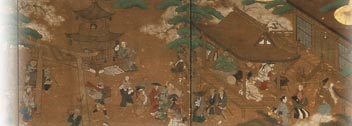International Round Table: “Theatre and Film in the Urban Space of Shanghai”
Outline
| date | Saturday, June 6, 2009, 10:00–17:20 |
|---|---|
| Venue | Waseda Campus Building 26, Room 302 |
| Organizer | Japanese Theatre Studies Course / Eastern Theatre Studies Course |
| outline | Part One: “The 1940s” Presenter: LUO Suwen (Shanghai Academy of Social Sciences) Panelists: JIANG Jin (East China Normal University), LIEN Ling-ling (Academica Sinica), SHAO Yingjian (Tokushima University), ZHANG Xinmin (Osaka City University), SHIRAI Keisuke (Bunkyo University), FUJINO Naoko (Kwansei Gakuin University, research fellow), MISU Yusuke (Hiroshima University of Economics, research fellow), TAKAHASHI Shun (Kochi University) Moderator: MORIDAIRA Takafumi (Waseda University, research associate) Part Two: “The 1950s” Presenter: JIANG Jin (East China Normal University) Panelists: LUO Suwen (Shanghai Academy of Social Sciences), LIEN Ling-ling (Academica Sinica), SHAO Yingjian (Tokushima University), ZHANG Xinmin (Osaka City University), SAJI Toshihiko (Wako University), MURAI Hiroshi (Kanagawa University), ABE Noriyuki (Doshisha University), MORIDAIRA Takafumi (Waseda University, research assosiate) Moderator: HIRABAYASHI Norikazu (Waseda University, project member) Part Three: “General Discussion” Moderator: OKAZAKI Yumi (Waseda University, project member) |
Details
To assemble in one room researchers doing studies on Shanghai theatre and film, set certain themes, discuss them thoroughly and exchange views: this was the conceptual basis for this international round table held under the joint sponsorship of the Japanese Theatre Studies Course and the Oriental Theatre Studies Course to which were invited two researchers from China, one from Taiwan and nine from within Japan. The participants included three specialists in film, eight theatre specialists (one from Huaju [spoken theatre, i.e. modern drama], two from Peking Opera, two from Yueju Opera, one from Huju Opera, one from Huaiju Opera and one from Huajixi [burlesque)]) and three from the areas of media and urban culture, for a total of fourteen persons. The gathering together of this many researchers specializing in the film and theatre of one city, Shanghai, was unprecedented: nothing like it has been done before in Japan or abroad. The theme set for the first part of the round table was the 1940s, which saw each of the various theatres that continue to exist in Shanghai down to the present day develop greatly as stage arts. Part Two was devoted to the 1950s after the formation of the People’s Republic of China, when masterpieces of stage and screen were produced one after another. The 1940s and 1950s are also an area of research that has recently attracted the keen interest of scholars of Shanghai history all over the world as a period ripe for reappraisal.The presenter in Part One, LUO Suwen, talked on “The Intersection of Internationalism and Indigenization: The Modern Entertainment Market in 1940s Shanghai.” Up until now the 1940s have been regarded as a rupture in the study of Shanghai history, but Professor LUO located the decade as a key period linking the 1920s and 1930s to the 1950s and demonstrated with abundant data that the film industry and films in China and abroad influenced theatre as a whole, including traditional theatres, and the Shanghai media in the 1930s and 1940s. The discussion that followed took up the issues she had presented and confirmed the importance of putting appraisals based on political history aside and repositioning theatre and film in Shanghai in the 1940s.
In her talk “Urban Entertainment and Politics in 1950s Shanghai,” the presenter for Part Two, JIANG Jin, stressed that even in the 1950s, when society as a whole was undergoing huge changes, industrialization and feminization of the city continued to take place uninterruptedly, showing that market principles were functioning constantly in the entertainment world of that period. In addition, she raised the point that as the only international city in China Shanghai ought to be discussed in comparison with New York and Paris rather than with other big Chinese cities. In the discussion that followed, panelists expressed the opinion that for example the Shanghai film world faced a major turning point in the 1950s when screening of American movies came to a halt, making it difficult to discuss film in the same context as theatre.
Part Three consisted of a general discussion about points presented earlier, in which all the panelists participated. At the moderator’s suggestion there was a nearly hour-long discussion on the key word “audience.” During the round table, which lasted for a total of five hours with intermissions, the panelists raised many highly thought-provoking issues, and the participants reached a consensus on the possibilities for and significance of research on Shanghai urban history through the prism of theatre and film in Shanghai in the 1940s and 1950s. In that respect the event can be said to have achieved great results. The hope is to continue doing joint research with the present panelists in some form in the future.


